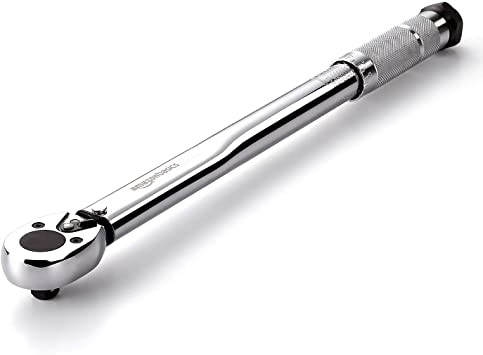A torque wrench is a type of wrench used to tighten fasteners to a specific torque (a measure of rotational force). It works by applying a calibrated spring-loaded mechanism to the fastener, which resists turning when the desired torque is reached. Torque wrenches are often used with nuts and bolts, but they can also be applied to other components such as pulleys, gears, or even pipes.

A torque wrench is a device used to apply a specific torque (rotational or twisting force). The most common use of a torque wrench is to ensure that bolts and nuts have been tightened correctly, but there are many other uses for this versatile tool.
Torque wrenches are available in different types, including beam and click-type wrenches. Both types are accurate when calibrated correctly. The main difference between these two types of wrenches is how they indicate when the desired torque has been reached.
A beam-type torque wrench uses a spring-loaded beam that deflects with increasing load, so the user can see when the desired amount of force has been applied. Click-type wrenches use internal mechanisms that make noise or feel differently as the desired amount of force is applied, and typically have an accuracy range from ±4% to ±6%.
How does a torque wrench work?
The principle behind the operation of a torque wrench is simple: apply enough force so that once the fastener reaches its specified torque value it will remain stationary. This means that there will be no further movement in either direction without additional force being applied. By knowing how much force was applied to the fastener, you can calculate its actual torque value by subtracting your calculated result from what you were aiming for (the desired value).
How much does a torque wrench cost?
The cost of a torque wrench depends on the brand and model that you choose to buy. However, you can expect to pay anywhere from $30 to $500 for a good quality tool.
When you’re shopping for a new torque wrench, keep in mind that there are two different types: click-type and beam-type. A click-type model is generally less expensive than a beam-type one because it has fewer parts and is easier to manufacture. But don’t let this fool you – click-type wrenches are just as accurate as beam-type ones. The only difference is how they display the amount of pressure being applied by the operator.
If you want an inexpensive model, opt for a click-type torque wrench with a dial gauge or digital display instead of an analog scale or needle pointer. These models will typically cost between $50-$500 depending on their features and design.
What makes a torque wrench different from other wrenches?
The first thing is the way that they work. A typical wrench works by using a handle that allows you to turn your hand and move the object around. A torque wrench uses an internal spring mechanism to give you more control over how much force you put on an object when you are turning it. This extra control helps you make sure that you do not over tighten or under tighten anything.
The second thing that makes a torque wrench different from other wrenches is how accurate they are. Many people think that if you have enough force behind a nut or bolt then it will come out of its hole no matter what type of tool you use, but this isn’t true at all. The truth is that if you don’t have enough force behind something then it won’t come out no matter how hard you try!
The amount of force required to tighten a specific fastener varies depending on how much friction there is between the threads; how far away from center the fastener is located; whether there are washers between the nut and bolt head; whether the fastener is going into wood, metal or plastic; if it’s being tightened against vibration (such as a crankshaft); and more.
There are many different types of torque wrenches available, including beam wrenches, click wrenches or dial-indicator wrenches — all with different features and advantages over each other.
Torque wrenches are different from other wrenches because they use a spring-loaded mechanism that applies force against a ratchet head. This allows for more accurate measurements than hand tools or other types of torque tools.
What torque wrench size do I require?
The socket drive size is the most common way to refer to torque wrenches. They come in 1/4-inch, 3/8-inch, 1/2-inch, and 3/4-inch drives, just like ratchet wrenches. The more torque they can deliver, the larger the drive and the longer the handle. For lug nuts, cylinder heads, suspension bushings, and other potential uses, most home mechanics will find that a torque wrench with a 1/2-inch drive and at least an 18-inch handle is the optimum choice.
A 3/8-inch drive wrench is preferable for rod and main bearing end caps when rebuilding an engine, but its shorter handle isn’t ideal for applying torque to truck lug nuts, trailer hitches, or other high-torque fasteners. A 1/8-inch torque wrench may be required for fine assembly work such as small screws on important pulleys or compression of cork gaskets on sensitive vintage autos.
Conclusion
Torque wrenches are relatively simple tools, and they don’t need to cost a bundle. They can run anywhere from $50 up to $300. If you want some serious torque measurement capabilities, you’ll have to pay more like $80-$500 (at least), but even then, you don’t need to break the bank.
